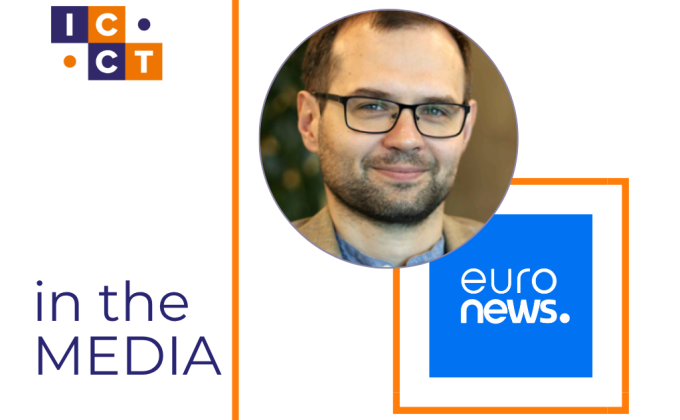Narco-terrorists threaten the whole of Africa, according to the French minister of Foreign Affairs. Since France launched its military intervention in Mali on 11 January, the terms "narco-terrorist" or "narco-salafist" have figured prominently in the Francophone press whenever the disparate group of jihadists and rebels in Northern Mali are mentioned. Traditionally the term narco-terrorism alludes to the threat and use of violence by narcotics traffickers against governments or their law-enforcement agencies. The labeling of terror groups in Mali as narco-terrorists is relatively new and probably politically motivated. The implication is clear: these terrorists do not adhere to the ideology they preach. They are criminals and drug dealers and deserve to be treated as such. In reality, however, terrorist networks in Mali only play a small role in the drugs trade, and proceeds from trafficking provide only a limited share of their revenues.
This is not to say that drugs are not a problem in West Africa; they are. Large quantities of cocaine first started flowing into West Africa around 2004. This was partly due to a large increase in European demand and tighter controls at Western European ports and airports. The Columbian cartels opened an alternative route along the 10th parallel, the 2600 km that separates Brazil from Senegal. Its role in cocaine traffic now has law enforcement officials referring to it as "Highway 10".
After the cocaine arrives in West Africa, significant quantities pass through Northern Mali on the way to Europe or the Middle East. Direct transatlantic flights into landlocked Mali have also occurred, as illustrated by the now notorious case of "Air Cocaine" in 2009. A burned out Boeing 727 was found on a makeshift sand runway in the desert of Northern Mali. According to the state prosecutor it had up to 11 tons of cocaine on board, implying a retail value approaching half a billion US dollars. Malian police were initially denied access to the wreck by Mali’s intelligence agency and later an important suspect was released on the president’s orders. Recent reports indicate that the case has been reopened and that new suspects have been arrested. Among them are the mayors of three nearby towns.
Although other transatlantic flights are known to have offloaded their cargo in the desert, it is the overland route that is most opaque. In the desolate region of Northern Mali, the combination of smuggling and a nomadic existence has been a way of life for centuries. Originally a hub for the smuggling of licit goods such as cigarettes and subsidised commodities, the same networks and practices now allow the drugs trade to grow and flourish. Next to cocaine, cannabis resin from Morocco and surplus arms from conflict areas also crisscross the Sahel. A plethora of criminal groups and tribes compete for a market share, often in collusion with the few state officials that are present.
There is certainly evidence that Al Qaida in the Islamic Maghreb (AQIM) and its offshoot Movement for Unity and Jihad in West Africa (MUJAO) are involved in drug smuggling. Battlefield reports abound of sedated jihadists fighting without fear or pain when wounded. After the liberation of the city of Gao by French troops, a convicted thief described how the MUJAO meted out justice. His unfortunate punishment – amputation of his hand – was generously preceded by an anesthetic: cocaine. Different witnesses have also seen drug convoys cross the desert with jihadist protection. It is, however, highly improbable that these jihadist groups are anything more than a small link in a long logistical chain from the farmer in the Andes to the addict in Amsterdam or London.
The main source of income for AQIM and MUJAO has been ransom money for Western hostages kidnapped in the broader Sahel. According to a former US ambassador to Mali, European governments have paid nearly $90 million since 2004 to secure the release of their nationals. These payments have directly contributed to strengthening the position of terrorist groups and stimulating further hostage takings. Malian officials, involved in the negotiations to free the hostages, are also suspected of taking a share of the spoils. These payments and links to narcotics trafficking help explain why the Malian government did not crack-down on AQIM and permitted the North to turn into a de facto terrorist safe haven from 2005-2011. A Wikileaks cable from 2010 sums up neighbouring Algeria’s analysis: it is not weakness on the part of Mali’s government, but willful complicity that has allowed AQIM to thrive.
Whether weak or complicit, Mali has an extremely poor record in cracking down on both terrorism and the narcotics trade. Although the link between terrorism and drugs is not as extensive as the term narco-terrorism would suggest, the current nexus between the state, organised crime and terrorism needs to be addressed. Although easier said than done, an international approach is required that combines counter-terrorism with state-building and the establishment of an effective rule of law policy. This goes way beyond the current search and destroy operation against AQIM and MUJAO and the envisaged training of Mali’s military by an EU-force. While the framing in France of these groups as "narco-terrorists" exaggerates the role of drugs in the equation, it should at least elicit a policy that is commensurate to the terminology.






